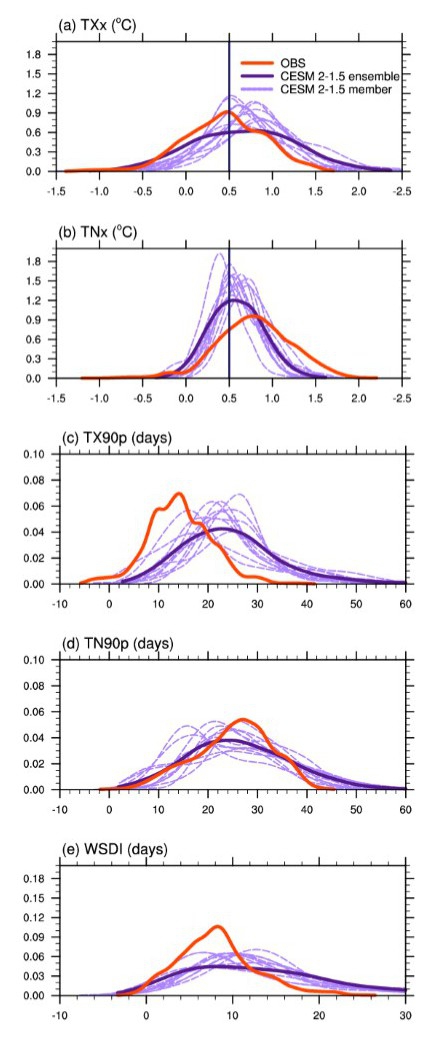The Paris Agreement of December 2015 sets a goal of "holding the increase in the global average temperature well below 2°C above the preindustrial levels and to pursue efforts to limit the temperature increase to 1.5°C above pre-industrial levels". As the real world has already witnessed a 0.5°C global mean surface temperature (GMST) warming, are the observed changes in heat extremes associated with a half-degree warming analogues for future projections? A recent published study on Earth’s Future verified this hypothesis. The study shows that under a half-degree warming, the observed changes can serve as conservative analogues for the future projections in daytime extremes over China.
Previous studies have assessed the impacts avoided by the 1.5°C warming target relative to the 2°C warming target by using climate models on both global and regional scales. Due to various factors, model-based projections include uncertainties and their reliability needs to be assessed.
"Our idea here is that the observed changes under the already happened half-degree warming increment can serve as both useful metrics for gauging the model’s performance in the historical simulations and more important, possible analogues for future projections.” said ZHAO Siyao of the Institute of Atmospheric Physics of the Chinese Academy of Sciences, the paper's first author.
In the study, ZHAO and her co-authors compare the changes of heat extremes in China derived from the observational records with that from the Community Earth System Model (CESM) Low-warming experiments, which are the first stabilized 1.5°C and 2°C warming level future projections. Results show that from the perspective of spatially aggregated, the increases of the general heat extremes under the past 0.5°C warming in the observational records are detectable in China. The heat extreme changes under the past half-degree warming are reasonably captured in the historical simulations with slightly weaker magnitudes. For the heat extreme changes in the future 0.5°C warming, the observational records can serve as conservative analogues in daytime extremes, while the nighttime extreme indices show comparable or weaker changes.

Changes in the heat extremes under future 0.5°C warming increment between the two long-term global warming goals from the CESM Low-warming projections. The probability density functions represent the percentage of landmass in continental China that experienced certain changes. The red lines are the results from the CN05.1. The purple solid lines are the model ensemble mean results of the CESM Low-warming experiment, and the light purple dashed lines are the model spread. (Image by ZHAO Siyao)
"The influence of future changes in anthropogenic aerosol emission on the temperature extremes is noteworthy." commented Prof. ZHOU Tianjun, corresponding author on the paper and senior scientist at the Institute of Atmospheric Physics in the Chinese Academy of Sciences. "The possible reduction of future anthropogenic aerosol emission will amplify the increase of heat extremes in comparison to present day especially during daytime in China. Given the possibly intensified extremes associated with future aerosol reductions, more attention should be paid to the currently heavy polluted regions. "He explained.
This study demonstrates that the climate impact under a half-degree increment in observational records is a useful metric for assessing the climate model historical simulations and a useful analogue to the future projections at regional scales. It provides valuable information for the communities of climate change and adaptation as well as climate model development and projection.
###
This work is jointly supported by the National Key Research and Development Program of China, National Natural Science Foundation of China and the International Partnership Program of Chinese Academy of Sciences.
Reference: Zhao S, Zhou T. Are the Observed Changes in Heat Extremes Associated with a Half‐degree Warming Increment Analogues for Future Projections? Earth's Future (2019) doi:10.1029/2019EF001237
Media contact: Ms. LIN Zheng, jennylin@mail.iap.ac.cn
